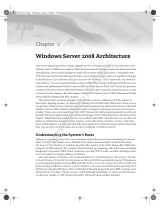
4
Signal Integrity Testing—This helps ensure proper signal quality on all major interfaces on the
system board including CPU bus, memory bus, system clocks, USB (universal serial bus), SATA
(storage) bus, and all expansion buses.
Voltage Integrity Testing—This helps ensure that voltage regulators on the system board and in the
power supply remain within HP specifications under worst-case stress conditions. Additionally,
voltage stress testing is conducted and measured on the various supported memory and processor
configurations.
Power Management Testing—This helps ensure that the system will reliably enter and exit all
supported low-power states, including sleep (S3), hibernation (S4), and powered off (S5) . In
addition, power cycle testing is conducted to simulate many years worth of power-up/power-down
usage with thousands of consecutive no-fail cycles.
Fan control—This helps ensure that the system fan(s) keep the system within the required thermal
window while minimizing fan acoustic levels.
Platform Validation Testing
This testing focuses on chipset validation, new architectural design features, the system board,
processor, system memory, system BIOS, and system-level hardware interoperability to help ensure
platform component stability prior to incorporation into an integrated desktop solution. Testing
includes:
System BIOS Testing—This is comprehensive validation and qualification of the system BIOS.
Testing includes BIOS calls and functionality, supported BIOS features, and expected BIOS
interoperability with the platform hardware and software.
System Board—This is comprehensive validation and qualification of the main Printed Circuit
Board (PCB) and Printed Circuit Assembly (PCA) including all components and interfaces. Testing
includes all chipset features and functions, all PCA subsystems (i.e., CPU, memory, graphics,
audio, expansion buses, network adapter, USB, storage (SATA/RAID), input/output interfaces,
etc), and associated hardware components.
Processor Qualification—This is comprehensive validation and qualification of each unique
processor type, including all processor frequencies and revisions/steppings. Processor
qualifications are executed on every supported platform.
System Memory Qualification—This is comprehensive validation and qualification of each unique
memory module type. System memory module qualifications are executed on every supported
platform.
Mechanical Validation Testing
This testing focuses on environmental and Industrial Design factors for the chassis, power supply, and
system board. Mechanical testing includes form, fit and function tests; paint finish; durability tests; and
security tests to help ensure that the product can be assembled correctly. Additional testing includes:
Shock and Vibration Testing—Units are subjected to random vibration and shock to help ensure
that the system functions correctly in harsh environments.
Packaging Testing—Boxed systems are subjected to resonance, random vibration, and multiple
drops from various heights to help ensure that the packaging can withstand rough handling and
protect the system.
Thermal Testing—Each system board, power supply, and integrated subsystem (memory, graphics,
audio, NIC, etc.) is tested in elevated ambient, maximum power, and minimum power situations to
help ensure that no component temperature specifications are exceeded.
Environmental Testing—Testing is conducted at various temperatures, altitudes, and humidity
settings for extended periods of time to help ensure that the system design is reliable in many
environments.










